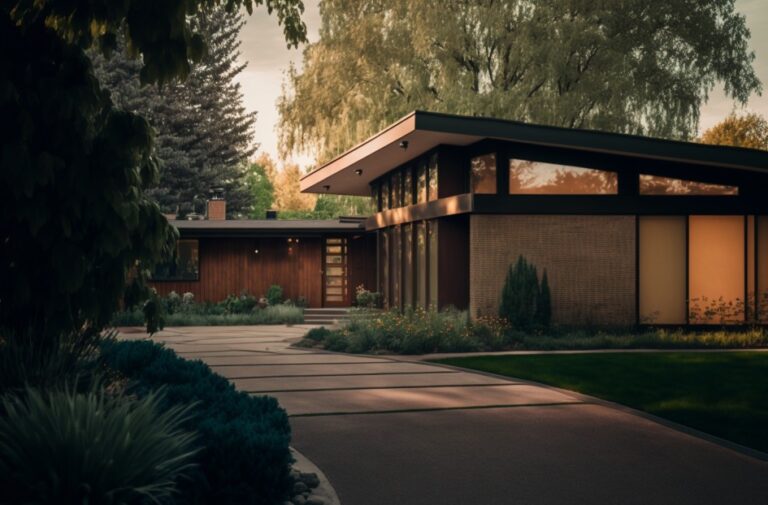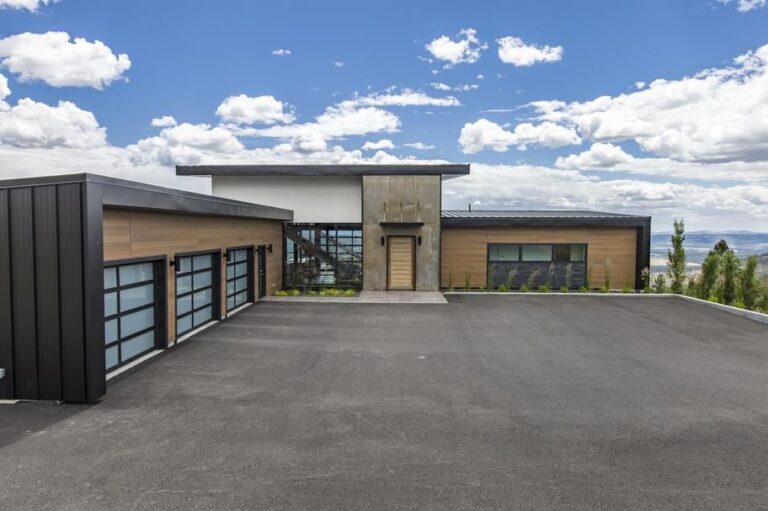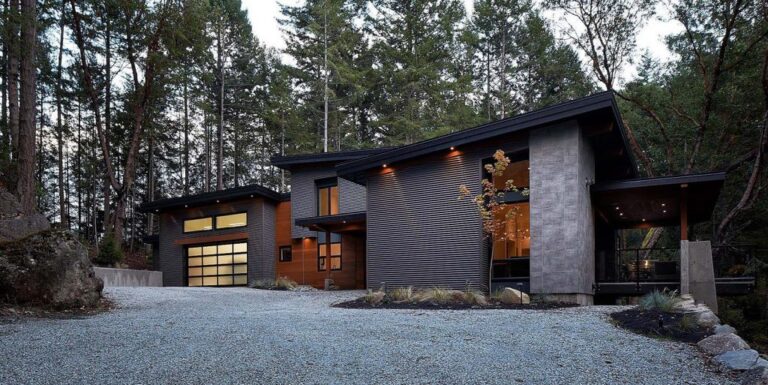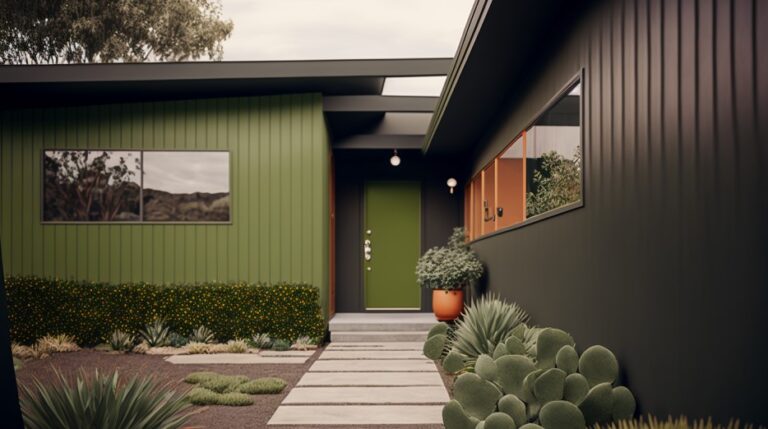Modern Siding Exterior A Comprehensive Guide
Modern siding exterior is transforming homes across the nation. From sleek and contemporary designs to rustic and charming styles, the options are vast and varied. This guide delves into the world of modern siding, exploring its many facets, including material choices, design trends, installation considerations, and much more. We’ll cover everything from the different types of siding to their respective energy efficiency ratings and sustainability impacts. Whether you’re a homeowner looking for an upgrade or a contractor seeking inspiration, this comprehensive guide has you covered.
Understanding the various siding materials, from durable fiber cement to maintenance-friendly vinyl, is key to making an informed decision. This guide explores each material’s strengths and weaknesses, allowing you to weigh the options based on your individual needs and budget. The considerations for energy efficiency, sustainability, and architectural style will also be covered in detail, helping you select the perfect siding for your home.
Types of Modern Siding
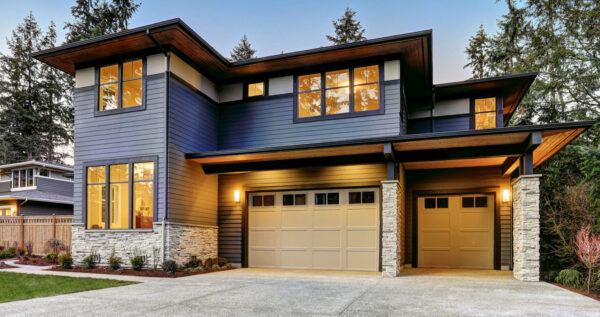
Modern siding choices have significantly evolved, offering homeowners a wider range of options to enhance both the aesthetics and performance of their homes. These materials vary in their durability, maintenance requirements, and cost, allowing homeowners to select a siding that aligns with their budget and desired style. Understanding the nuances of each material is key to making an informed decision.
Fiber Cement Siding
Fiber cement siding is a popular choice for its durability and low-maintenance nature. It’s a composite material created by combining cement, cellulose fibers, and other additives. This blend results in a strong, weather-resistant material that can withstand harsh climates and environmental factors.
- Durability: Fiber cement siding is exceptionally durable, resisting rot, insect damage, and moisture absorption. It’s resistant to fire and impact, making it a robust choice for long-term protection. Many manufacturers offer warranties exceeding 50 years.
- Maintenance: Fiber cement siding requires minimal maintenance. It doesn’t need painting or staining as frequently as other materials, and cleaning is usually straightforward with soap and water.
- Cost: Fiber cement siding generally falls in the mid-range price category. The cost is influenced by factors such as the specific product, labor costs, and the size of the project.
- Aesthetic Appeal: Fiber cement siding offers a wide array of colors and textures, allowing for diverse design choices. It can mimic the look of natural materials like wood or stone, providing a classic or modern aesthetic.
Vinyl Siding
Vinyl siding is a popular and affordable choice for its ease of installation and low maintenance. It’s a synthetic material that’s resistant to moisture, insects, and rot.
- Durability: Vinyl siding is durable and resistant to weathering, but its impact resistance is generally lower than that of fiber cement. Proper installation is crucial for longevity.
- Maintenance: Vinyl siding is known for its low maintenance requirements. Cleaning is usually simple, and it doesn’t require painting or staining. Regular washing can keep the siding looking new for years.
- Cost: Vinyl siding is typically the most affordable option among the materials discussed. Its cost-effectiveness makes it attractive for homeowners on a budget.
- Aesthetic Appeal: Vinyl siding comes in a vast array of colors, styles, and textures, including wood-grain patterns. This versatility allows for a variety of design choices to complement various architectural styles.
Metal Siding
Metal siding, including aluminum, steel, and copper, provides excellent durability and a modern aesthetic. Its weather resistance and longevity make it a desirable choice for homeowners.
- Durability: Metal siding, particularly steel and aluminum, exhibits high durability. It resists dents, scratches, and warping. Properly installed metal siding can last for decades, requiring minimal maintenance.
- Maintenance: Metal siding generally requires minimal maintenance, especially when treated with protective coatings. Cleaning with soap and water is often sufficient, and occasional touch-ups may be needed for minor damage.
- Cost: Metal siding can vary significantly in cost depending on the type of metal used, the thickness of the material, and the design features. It often falls in the mid-range to higher price bracket compared to vinyl.
- Aesthetic Appeal: Metal siding offers a range of styles, from sleek and contemporary to rustic and traditional. The options for color, texture, and finish enable homeowners to achieve a desired aesthetic.
Siding Material Comparison, Modern Siding Exterior
| Material Type | Durability | Maintenance | Cost | Aesthetic Appeal |
|---|---|---|---|---|
| Fiber Cement | High | Low | Mid-range | Versatile, mimicking natural materials |
| Vinyl | Moderate | Very Low | Low | Wide range of colors and styles |
| Metal | High | Low | Mid-range to High | Modern, diverse styles |
Styles and Designs
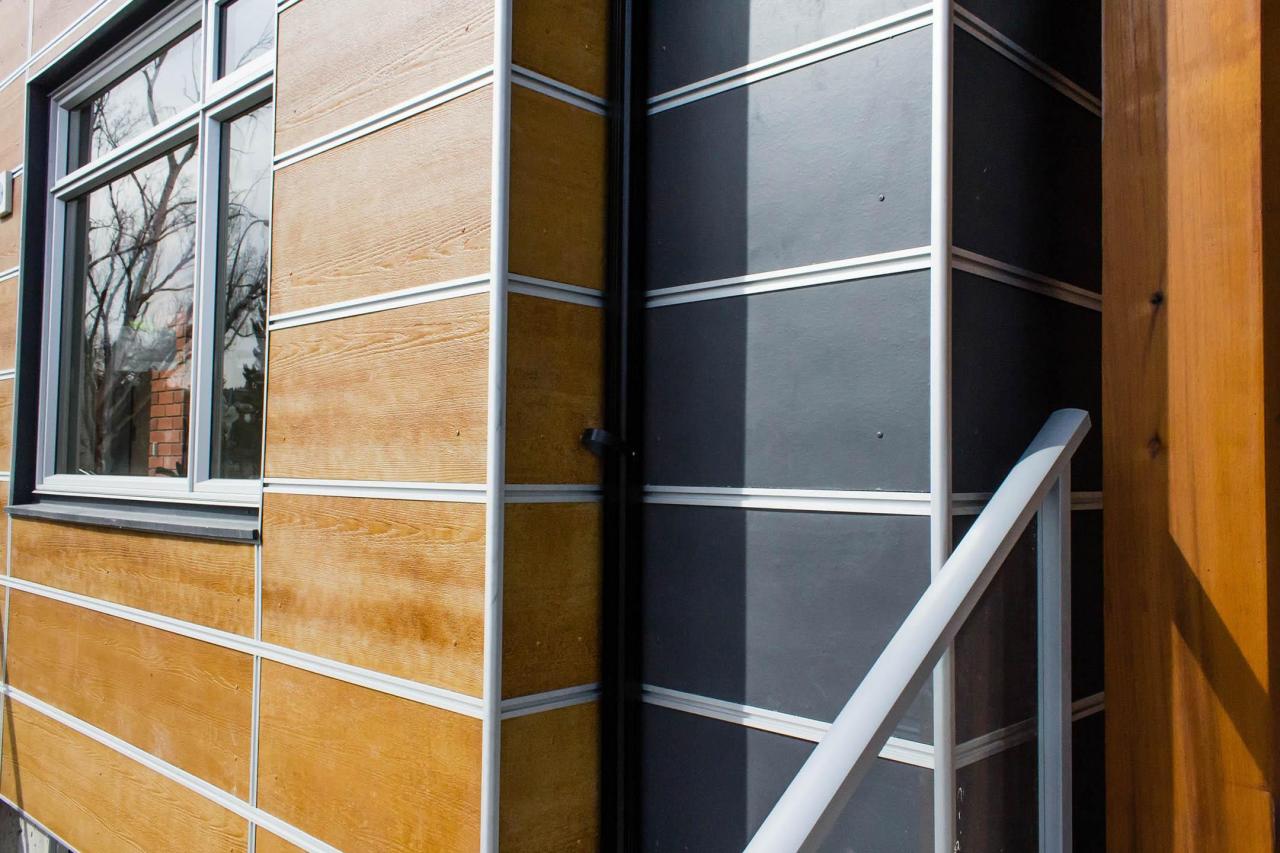
Source: pinimg.com
Modern siding offers a diverse range of styles, allowing homeowners to personalize their home’s exterior. From classic horizontal lines to contemporary textured surfaces, the choice of siding style significantly impacts the overall aesthetic and architectural appeal of a house. Understanding the available styles, colors, and finishes is crucial for making informed decisions.
Siding Styles
Various siding styles cater to different architectural preferences and house types. The choice of style profoundly affects the visual impact and the overall feel of the home. Horizontal siding, for instance, provides a classic and timeless look, while vertical siding offers a more modern and structured appearance.
- Horizontal Siding: This traditional style involves boards running horizontally across the house. It’s a popular choice for its classic appeal and versatility, often found in both traditional and modern homes. It’s relatively straightforward to install and maintain, and it can be paired with various architectural elements to create a range of aesthetics.
- Vertical Siding: Vertical siding features boards running vertically, lending a contemporary and structured feel to a home. This style is often preferred for its ability to create a more striking and modern architectural statement, particularly suitable for houses with prominent facades.
- Shiplap Siding: Shiplap siding, with its overlapping horizontal boards, adds a distinct rustic charm. This style is well-suited for houses aiming for a traditional or farmhouse aesthetic, providing a unique visual texture. The gaps between boards can be filled with sealant or caulking to maintain a consistent look.
- Textured Siding: Textured siding introduces visual interest with various surface patterns. This style can range from subtle embossing to pronounced grooves, offering homeowners a chance to customize the exterior with unique patterns. Textured siding is well-suited for modern homes that prioritize visual differentiation and distinctive architectural elements.
Color and Finish Options
Modern siding comes in a broad spectrum of colors and finishes. Choosing the right color palette is essential for enhancing the home’s curb appeal and complementing the surrounding environment.
- Colors: From neutral tones like beige and gray to vibrant hues like blues and greens, the color options for modern siding are extensive. The selection of colors can significantly influence the overall aesthetic and create a distinctive visual statement for the house.
- Finishes: Modern siding often comes in various finishes, including smooth, textured, or painted. Smooth finishes provide a sleek, contemporary look, while textured finishes introduce visual depth and a unique tactile element. Painted finishes offer a broad array of customization possibilities, enabling homeowners to match the siding’s color to the rest of the house’s design.
Siding Style Comparison
| Style | Aesthetics | Pros | Cons | Suitability |
|---|---|---|---|---|
| Horizontal | Classic, timeless | Versatile, relatively easy installation, cost-effective | Can appear less modern and may require more maintenance for gaps | Traditional homes, contemporary homes with classic accents |
| Vertical | Modern, structured | Creates a strong visual statement, can be durable | May not suit all architectural styles; potentially higher installation cost | Modern homes, homes with prominent facades |
| Shiplap | Rustic, charming | Unique visual texture adds character | Can be more complex to install, may require specialized materials | Farmhouses, homes with traditional or rustic elements |
| Textured | Unique, visually interesting | Adds visual depth, distinguishes the house | Installation might be more intricate, with potential for higher maintenance. | Modern homes seeking a distinctive look, homes with prominent facades |
Installation and Maintenance: Modern Siding Exterior
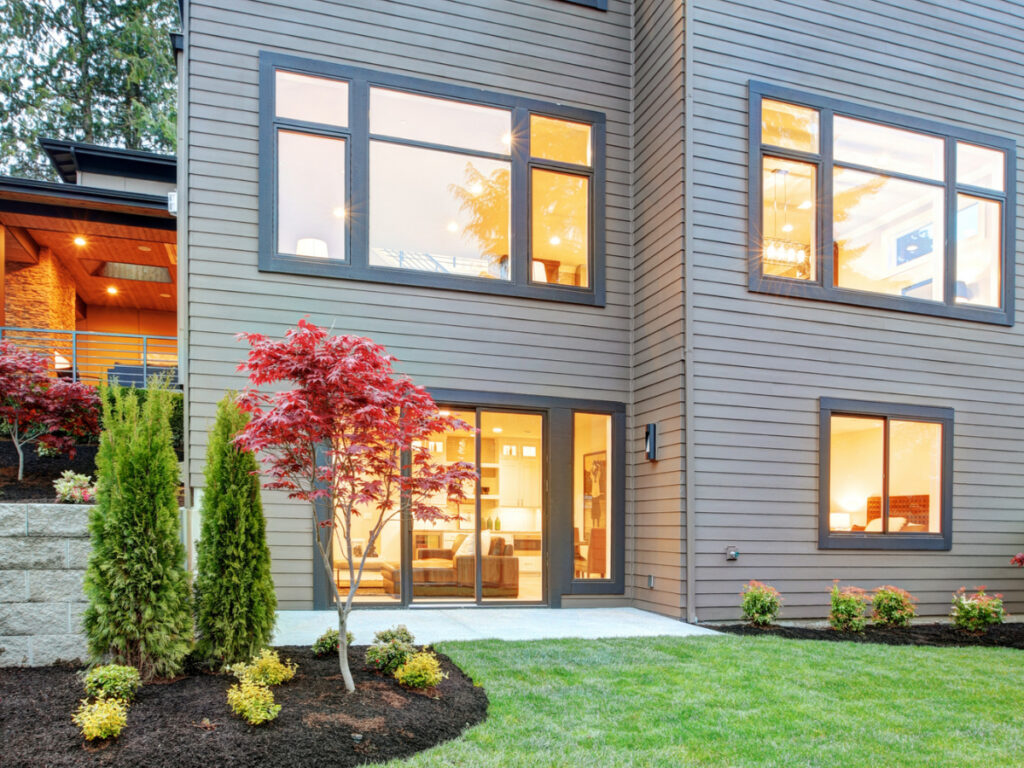
Source: ameriside.com
Modern siding installation, while seemingly straightforward, demands precision and adherence to best practices. Proper installation ensures the longevity and aesthetic appeal of the siding, while appropriate maintenance prevents premature deterioration. This section delves into the crucial aspects of installation and maintenance, providing a comprehensive guide for both homeowners and professionals.
Professional installation of modern siding requires a methodical approach. Understanding the specific siding material and its installation requirements is paramount. Different materials, such as fiber cement, vinyl, or metal, necessitate unique tools and techniques. Ensuring a solid foundation and proper flashing is critical for long-term performance and water resistance. A well-executed installation minimizes the potential for future issues like leaks or structural damage.
Installation Process
The installation process involves several key steps, beginning with a thorough assessment of the existing structure. This includes checking for any structural issues or moisture problems that could compromise the new siding’s performance. Careful measurements are taken to ensure precise material cuts and proper alignment. Systematically installing the siding, working from the bottom up, helps maintain a consistent aesthetic and reduces the likelihood of errors. The use of specialized fasteners and adhesives tailored to the chosen siding material is crucial for optimal performance.
Essential Tools and Techniques
A range of specialized tools is necessary for a professional installation. These include, but are not limited to, measuring tapes, power saws, drills, and specialized siding applicators. Proper techniques, such as using the correct fasteners and ensuring proper spacing, contribute to a robust and durable installation. Thorough training and experience are essential for mastering these techniques. Adhering to the manufacturer’s instructions for the specific siding material is paramount.
Maintenance Best Practices
Regular maintenance is essential to preserving the beauty and functionality of modern siding. This involves a proactive approach to addressing potential problems before they escalate. Regular inspections for damage or deterioration can prevent significant issues from arising.
Maintenance Schedule
| Task | Frequency | Tools | Steps |
|---|---|---|---|
| Visual Inspection | Monthly | Magnifying glass, flashlight | Inspect for loose panels, gaps, cracks, or signs of water damage. Note any unusual discolorations or pest activity. |
| Cleaning | Quarterly | Soft brush, mild detergent, water | Remove loose debris and dirt. Wash the siding with a gentle solution, avoiding harsh chemicals that could damage the surface. Rinse thoroughly. |
| Caulk Inspection and Repair | Semi-Annually | Caulk gun, caulk, utility knife | Check for gaps or cracks around windows, doors, and other penetrations. Seal any gaps with appropriate caulk to prevent water intrusion. |
| Pest Inspection | Semi-Annually | Visual inspection, insect repellent spray (if needed) | Check for signs of pest activity. Remove any visible insects. Use appropriate pest control measures if necessary. |
| Professional Inspection | Annually | Specialized tools (determined by siding type) | Consult with a professional siding contractor for a thorough inspection, including a structural assessment. |
Modern Siding and Architecture
Modern siding choices are no longer limited to traditional materials and aesthetics. The evolution of modern siding materials and installation techniques allows for a wide array of architectural expressions. This section delves into the relationship between modern siding and contemporary architectural trends, highlighting how siding choices impact a home’s curb appeal and value.
Modern architectural trends often prioritize clean lines, minimalist designs, and the integration of natural elements. Modern siding plays a pivotal role in achieving these aesthetics. It’s a key element in expressing the overall design vision of a home and often complements a variety of architectural styles, from contemporary to farmhouse, by adding a layer of visual appeal and practical functionality.
Architectural Trends Utilizing Modern Siding
Modern architecture frequently embraces large expanses of glass, open floor plans, and geometric forms. These characteristics are often mirrored in the siding choices, emphasizing clean lines, smooth surfaces, and a seamless transition between interior and exterior spaces. The use of siding that reflects light, such as metal or certain types of composite materials, is common in these designs. The interplay of light and shadow, created by the interplay of siding materials and the architectural forms, is a defining element.
Modern Siding and Architectural Styles
Modern siding seamlessly blends with various architectural styles. Contemporary homes, with their emphasis on sleek lines and minimalist details, often feature modern siding that accentuates these characteristics. For example, smooth, painted steel siding can complement a contemporary home’s clean aesthetic, while the use of large, rectangular windows and a flat roofline further enhances the design.
Similarly, modern siding can also enhance the visual appeal of a farmhouse design. While farmhouse aesthetics often incorporate natural elements and traditional materials, the use of modern siding options, like fiber cement, can provide a unique twist. This offers a balance between the rustic charm of the farmhouse style and the modern design elements. The material’s durability and low maintenance characteristics also fit well within the farmhouse aesthetic’s focus on longevity and practicality.
Influence of Siding Choices on Curb Appeal and Value
The choice of siding directly impacts a home’s curb appeal and, consequently, its market value. High-quality, well-maintained modern siding can significantly enhance the visual appeal of a property. The material’s durability, color, and texture all contribute to a home’s overall attractiveness. Furthermore, energy efficiency considerations also influence siding choices, contributing to the home’s value.
Examples of Successful Modern Siding Applications
The successful application of modern siding in various architectural designs showcases its versatility. One example includes a contemporary home with a large glass facade and a flat roof. The use of metal siding painted in a muted gray complemented the home’s clean lines and emphasized the spacious interior.
Another successful example involves a farmhouse-style home with exposed beams and a pitched roof. The use of a textured fiber cement siding, in a warm beige tone, balanced the rustic elements while still incorporating modern aesthetics. The durable nature of the material also aligns with the farmhouse style’s emphasis on longevity.
In these examples, the siding choices not only enhanced the home’s visual appeal but also contributed to its overall value and desirability in the market.
Modern Siding and Energy Efficiency
Modern siding choices significantly impact a home’s energy efficiency. Selecting the right material can drastically reduce energy consumption, leading to lower utility bills and a smaller carbon footprint. The insulation properties of siding, combined with its overall thermal performance, play a crucial role in maintaining a comfortable indoor temperature year-round.
Choosing sito sideith high insulation values and low thermal conductivity is key to achieving energy savings. This translates to a more comfortable living environment and often contributes to a higher Energy Star rating, reflecting the home’s energy efficiency.
Impact of Siding Materials on Insulation
Siding materials vary significantly in their ability to insulate a home. The insulation properties of a siding material depend on its thermal conductivity, or how readily it transmits heat. Materials with lower thermal conductivity will retain heat better in winter and keep the interior cooler in summer. This results in lower energy consumption for heating and cooling. Different materials have different inherent insulation properties.
Contribution to Energy Star Ratings
Modern siding choices influence a home’s Energy Star rating. Homes with siding that effectively insulates and reduces heat transfer often receive higher ratings. These ratings are based on the home’s overall energy efficiency, and the contribution of the siding is often a significant factor. By using high-performance siding, homeowners can demonstrate their commitment to energy conservation and potentially qualify for energy-efficient incentives.
Comparison of Siding Materials and Energy Efficiency
| Material | Insulation Rating (k-value) | Estimated Energy Savings (%) | Approximate Cost ($) |
|---|---|---|---|
| Fiber Cement Siding | 0.6-0.9 | 10-15 | $10-$15 per square foot |
| Vinyl Siding | 0.7-1.2 | 8-12 | $5-$10 per square foot |
| Wood Siding | 0.8-1.5 | 6-10 | $8-$12 per square foot |
| Metal Siding | 0.1-0.5 | 15-20 | $12-$20 per square foot |
| Composite Siding | 0.7-1.0 | 9-14 | $10-$15 per square foot |
Note: Insulation ratings (k-values) are indicative and can vary based on specific material types and construction methods. Energy savings percentages are estimates and can fluctuate based on climate, local utility rates, and home design. Cost figures are approximate and can change depending on location and specific project needs.
Modern Siding and Sustainability
Modern siding choices are increasingly influenced by environmental considerations. The lifecycle of a siding material, from its production to its eventual disposal, plays a crucial role in its overall sustainability impact. This section delves into the environmental footprint of various modern siding materials, highlighting eco-friendly options and responsible disposal practices.
Environmental Impact of Different Siding Materials
The manufacturing processes and raw materials used for different siding types significantly impact their environmental footprint. Some materials require more energy and resources to produce, contributing more to greenhouse gas emissions and resource depletion. The extraction of raw materials, processing, and transportation all add to the environmental burden. The embodied energy in a siding material reflects the total energy used in its production.
- Wood Siding: While often seen as a natural material, wood siding production can have significant environmental consequences, especially if not sourced sustainably. Deforestation, soil erosion, and water pollution can occur during lumber harvesting. The use of chemical treatments and preservatives further adds to the environmental impact. However, responsibly sourced wood siding, utilizing certified sustainable forestry practices, minimizes these negative impacts.
- Vinyl Siding: The production of Vinyl siding often relies on fossil fuels, contributing to greenhouse gas emissions. The manufacturing process can also generate hazardous waste if not managed properly. However, vinyl siding has a relatively low embodied energy compared to some other materials, and its recyclability is an advantage.
- Fiber Cement Siding: Fiber cement siding typically uses a mix of cement, sand, and cellulose fiber. The production of cement, a major component, is energy-intensive and releases significant carbon dioxide emissions. However, fiber cement siding offers a long lifespan, reducing the need for frequent replacements, which can offset some of its environmental impact.
- Metal Siding: Metal siding, such as steel or aluminum, generally has a lower environmental impact compared to other materials. Steel production still requires significant energy and can generate emissions, but recycled metal reduces these impacts. Aluminum, with its recyclability, offers an excellent option from a sustainability standpoint.
Recycling and Disposal Procedures
Proper recycling and disposal procedures are crucial for minimizing the environmental impact of modern siding. Each material has unique requirements and considerations.
- Wood Siding: Wood siding can often be recycled into mulch or wood chips, but proper disposal methods should be followed to prevent contamination and ensure the recycling process is successful. Some municipalities may have specific guidelines regarding wood siding disposal.
- Vinyl Siding: Vinyl siding is highly recyclable. Many recycling facilities accept vinyl siding, and homeowners should check local recycling programs for specific guidelines and drop-off locations. Proper sorting and handling are important to maintain the quality of the recycled material.
- Fiber Cement Siding: Fiber cement siding, though not as readily recyclable as vinyl, can be recycled into aggregates for construction purposes. Contacting local recycling centers or disposal companies is essential to understanding the process and ensuring proper disposal to minimize environmental hazards.
- Metal Siding: Metal siding, particularly aluminum and steel, is highly recyclable. Recycling centers often accept metal siding for reuse in manufacturing new products. Proper separation from other materials is vital for maintaining the quality of the recycled metal.
Eco-Friendly Modern Siding Options
Several modern siding materials offer eco-friendly alternatives.
- Recycled Content Siding: Siding made from recycled materials significantly reduces the need for virgin resources. This approach minimizes environmental impact throughout the production cycle, and recycled content can be a substantial component of siding options.
- Low-VOC Siding: Siding with low volatile organic compound (VOC) emissions is preferable to reduce air pollution during installation and over the life of the siding. Low-VOC materials have a reduced impact on indoor air quality, making them more environmentally responsible for residential settings.
- Sustainable Wood Options: Using wood siding from responsibly managed forests, certified by organizations like the Forest Stewardship Council (FSC), is a sustainable approach. These certifications ensure that the wood comes from sustainably managed forests that minimize environmental impact.
Modern Siding and Cost Considerations
Modern siding, with its diverse materials and styles, offers a significant upgrade for any home. However, understanding the factors influencing its cost is crucial for homeowners planning a renovation. This section delves into the elements affecting pricing, installation complexities, and budgeting strategies for a modern siding project.
Factors Influencing Siding Costs
The cost of modern siding isn’t solely determined by the material itself. Several factors contribute to the overall expense. These include the type and quantity of siding required, the size and complexity of the home’s exterior, labor costs, and any necessary preparatory work, such as repairs or cleanup. Furthermore, regional variations in material and labor costs can impact the final price.
Installation Costs and Material Variation
Installation costs are highly dependent on the chosen material and the complexity of the installation. For instance, installing composite siding is typically more straightforward and thus less expensive than installing a complex, multi-layered, or custom-designed metal siding system. This is because of factors such as the material’s weight, the complexity of the design, and the amount of time needed for installation. The intricacy of the home’s architecture, the presence of difficult-to-reach areas, and the need for specialized tools or equipment also influence the labor costs.
Budgeting Strategies for Modern Siding Projects
Effective budgeting is key to managing a modern siding project. Homeowners should first create a detailed estimate that accounts for all expenses. This includes material costs, labor costs, permits (if required), and any additional services like roof repairs or gutter replacement. Using a project timeline can help track progress and ensure that funds are allocated appropriately. Consider pre-construction consultations with contractors to discuss potential challenges and associated costs. Lastly, consider financing options, such as loans or home equity lines of credit (HELOCs), to help manage the project’s financial burden.
Material Cost Comparison
| Material Type | Cost per Square Foot (USD) | Labor Costs (USD) | Total Estimated Project Cost (USD) |
|---|---|---|---|
| Fiber Cement Siding | $8-$15 | $15-$30 | $120-$300 |
| Vinyl Siding | $5-$10 | $10-$20 | $80-$200 |
| Wood Siding | $10-$25 | $20-$40 | $200-$450 |
| Metal Siding | $12-$25 | $20-$40 | $200-$500 |
| Composite Siding | $10-$18 | $12-$25 | $150-$300 |
Note: These are estimated costs and may vary significantly based on the specific project requirements, regional differences, and contractor rates. Detailed quotes from multiple contractors are crucial for accurate estimations.
Modern Siding and Visual Inspiration
Modern siding offers a wide array of design possibilities, transforming a home’s exterior into a unique and stylish statement. Understanding the visual options available, from color palettes to textures, empowers homeowners to select a siding that perfectly complements their architectural style and personal aesthetic. This exploration will delve into various inspirational designs, highlighting diverse applications and the impact of different choices.
Choosing the right siding isn’t just about aesthetics; it’s about creating a cohesive and visually appealing exterior that reflects the home’s personality. This section explores how modern siding can be tailored to various architectural styles and settings, emphasizing the importance of careful consideration in color, texture, and design choices.
Color Palettes for Modern Siding
Selecting the right color palette for modern siding is crucial for creating a harmonious and visually appealing exterior. Consider the surrounding environment, architectural style, and personal preferences. A well-chosen color palette can significantly enhance the curb appeal and value of a home. Neutral tones like greys, beiges, and whites provide a timeless and sophisticated backdrop, allowing other architectural elements to stand out. Vibrant colors like blues, greens, and terracotta can create a bold and modern statement. Monochromatic color schemes, featuring variations of a single color, can create a sleek and modern look.
Siding Textures in Modern Designs
Siding textures play a vital role in shaping the visual character of a modern home. Smooth, sleek surfaces offer a contemporary aesthetic, while textured options like wood-grain or stone-like patterns can add depth and visual interest. Choosing the right texture complements the architectural style and enhances the overall visual appeal of the home. For example, a home with clean lines might benefit from smooth siding, while a more rustic-inspired design could incorporate wood-grain or stone-like siding textures.
Modern Siding Designs in Various Settings
A diverse range of modern siding designs can be adapted to different settings. Consider the following examples:
- Contemporary Farmhouse: A modern farmhouse exterior might utilize a combination of smooth, light grey siding with accents of darker wood-grain siding on the trim or gables. This approach creates a visually appealing blend of modern and rustic elements.
- Urban Loft: A sleek urban loft apartment building could showcase a minimalist design using a dark gray or charcoal-colored siding. Large expanses of glass and metal accents will be a prominent feature, complemented by the modern siding.
- Coastal Home: A coastal home can incorporate a light beige or off-white siding with subtle horizontal or vertical lines. These siding choices provide a sense of calmness and serenity while still embodying a modern design.
These examples demonstrate how modern siding can be adapted to various architectural styles and environmental settings, allowing homeowners to create a unique and visually appealing exterior.
Ending Remarks
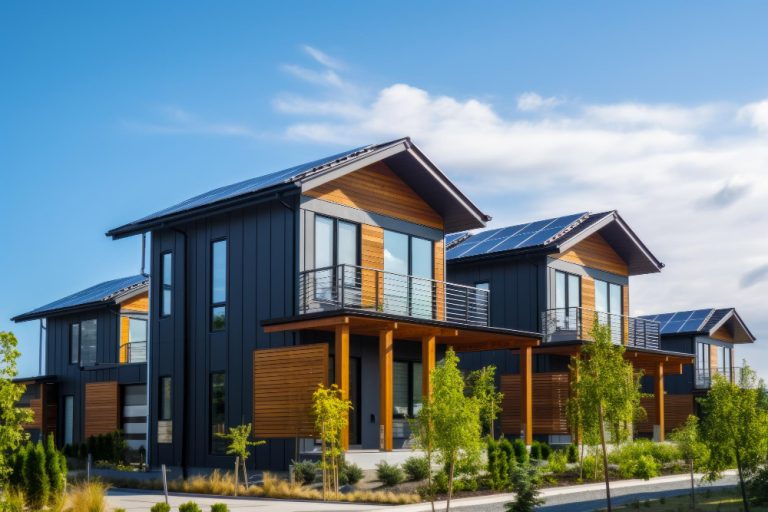
Source: polymer-process.com
In conclusion, modern siding offers a plethora of choices to enhance your home’s aesthetic, durability, and energy efficiency. From selecting the right material to considering installation and maintenance, this guide has provided a comprehensive overview. By understanding the factors that influence cost, sustainability, and architectural trends, you can confidently choose the perfect modern siding solution for your home. Ultimately, the choice is yours, but with this information, you’re well-equipped to make an informed decision that enhances your property’s value and appeal.
